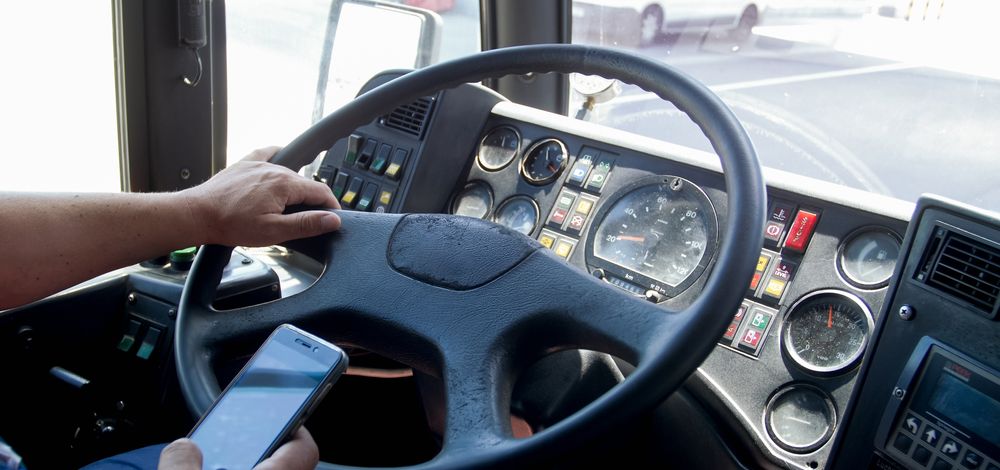
Fleet managers know that crashes happen. But being familiar with the different types of crashes, which kind is the most likely to result in injuries or fatalities, and the biggest risk factors for each is an important key in minimizing collisions in your fleet. According to the most recent data from the National Safety Council (NSC), crashes with other motor vehicles are by far the most common type of collisions, accounting for 70.7% of all crashes, or 9.33 million, each year. Following these are single vehicle crashes with other objects (21.1%), or animals (4.8%), or pedestrians (0.9%).
When a driver collides with another vehicle, the resulting collision is categorized as one of the following:
· Rear-end collision
· Angle collision
· Sideswipe collision
· Head-on collision
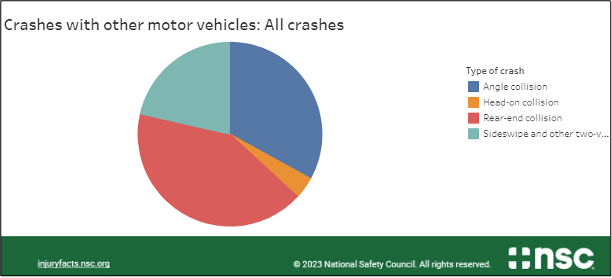
Rear-End Collisions
The NSC data shows that rear-end collisions make up the biggest portion of total crashes with other vehicles, coming in at 41.7% or 3.89 million crashes. A rear-end collision occurs when one vehicle crashes into the back of another vehicle, and the front of the striking vehicle collides with the rear of the vehicle in front of it. Rear end collisions are the most common as they can occur for a variety of reasons, such as tailgating or following too closely, distracted driving, speeding, making sudden stops, or poor weather conditions.
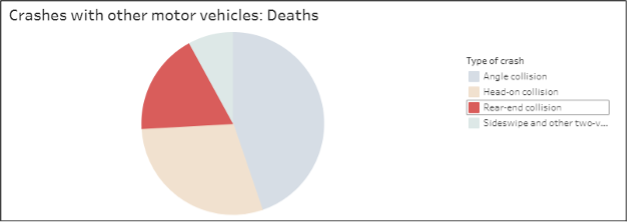
While the most common, rear-end collisions result in fewer deaths than other collision types, accounting for only 17.9% of total yearly fatalities. When it comes to injuries though, rear-end collisions account for 37.7%, or 1.59 million injuries a year. Common injuries resulting from rear-end crashes include neck and back injuries such as whiplash, muscle sprains, spinal fractures, or herniated discs.
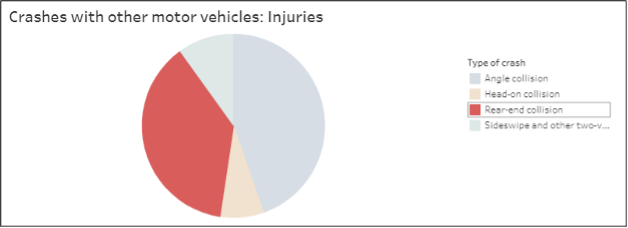
Angle Collisions
An angle collision, also known as a side-impact or T-bone collision, occurs when the front of one vehicle crashes into the side of another vehicle. This type of collision usually happens at an intersection when one vehicle fails to yield the right of way or runs a red light, crossing the path of another vehicle. These are the second most common types of crashes between two vehicles, making up 33% of the total annual number, or 3.08 million crashes.
Angle collisions can be particularly dangerous because the side of a vehicle provides less protection to drivers and passengers compared to the front or rear. The data support this, with angle collisions making up 44.7% of all injuries and 44.8% of all deaths from crashes involving two or more motor vehicles, making them the most dangerous to drivers. The severity of injuries in angle collisions depends on various factors, including the speed of the vehicles involved, the point of impact, and the safety features of the vehicles.
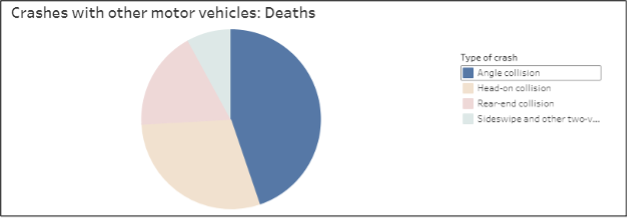
Events that may lead up to an angle collision include running a red light or a stop sign, failing to yield to oncoming traffic, and crossing traffic lanes without appropriate clearance beforehand. Preventing these types of driving behaviors, whether due to distraction or making poor choices behind the wheel, is integral to mitigating the risk of serious injury.
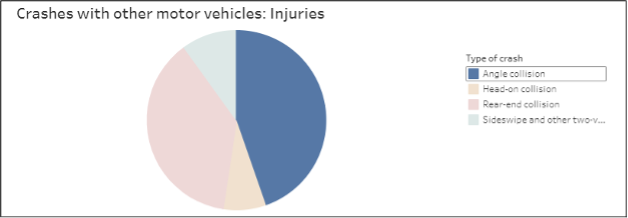
Sideswipe Collisions
A sideswipe collision is the result of two parallel-moving vehicles making contact with each other, and these make up over a fifth of all crashes. Unlike a rear-end collision, where one vehicle is following another, sideswipe collisions involve vehicles moving alongside each other. Sideswipes often happen when one vehicle drifts into the adjacent lane without enough clearance, leading to contact with the neighboring vehicle. Making improper lane changes, problematic merging areas, drowsy or fatigued driving, and distracted driving are all factors that can contribute to sideswipe collisions.
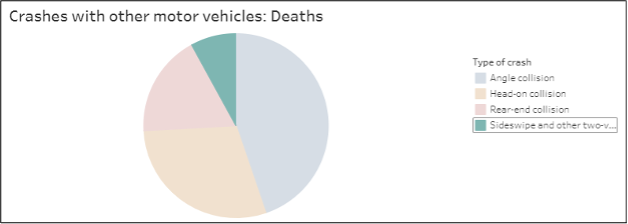
Due to the less severe angle of the collision, sideswipes usually do not result in serious injury or fatality, but they still make up 8% of deaths and injuries.
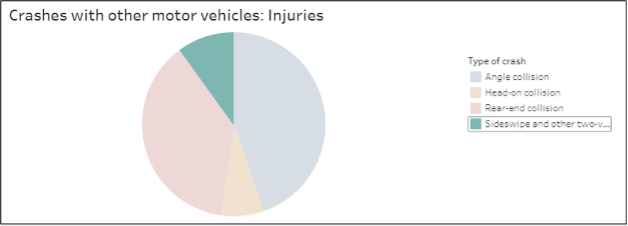
Head-On Collisions
A head-on collision is the least common type of crash, but often one of the most dangerous because of the high force of impact and rapid decrease in speed. They occur when the front ends of two vehicles traveling in opposite directions collide with each other. While accounting for only 3.9% of total crashes, head-on collisions are responsible for nearly a third of motor vehicle crash deaths, illustrating how dangerous they can be. Common scenarios leading to head-on collisions include crossing the centerline into oncoming traffic, driving the wrong way on a one-way street or highway, and overtaking in unsafe conditions.
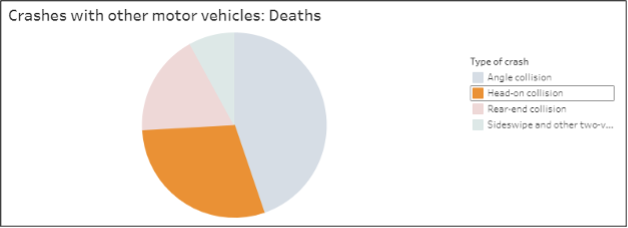
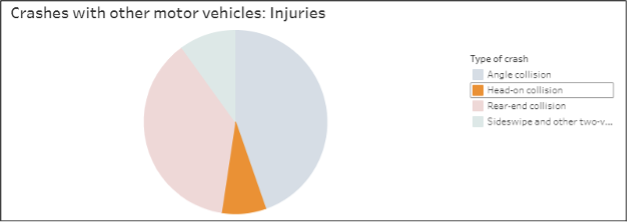
Protecting Drivers From Every Kind of Crash
While the events leading up to collisions can vary significantly, one thing that has been shown to reduce crashes and improve driver performance over time is added reaction and correction time. Accurately alerting a driver to a potential hazard, whether an un-signaled lane departure or unsafe following distance, can make the difference between an uneventful ride and disaster. To learn more about how Mobileye helps keep drivers safer on the road, read more about our proven collision avoidance technology here.


